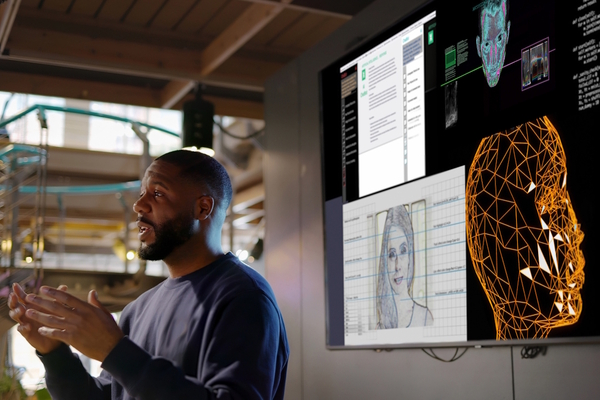Managing high-throughput fulfilment

James Smith at AutoStore explains why high-throughput warehouses have become a trend for retailers
While the Christmas shopping period has always been busy for retailers, events such as Black Friday and Cyber Monday have created a surge in consumer demand from November right the way through to the January sales. However, some reports have suggested that Christmas shopping is starting earlier every year, with many consumers beginning their holiday shopping as early as summer.
It’s not uncommon for supply chain managers and operations directors to lose sleep during this time of the year as they ramp up efforts to cope with demand, such as starting their campaigns early, extending working hours, hiring temporary staff, or paying for expedited shipping.
All this means that warehouses can become incredibly stretched, especially as Christmas orders begin to skyrocket in the summer, and consumers shopping online expect faster and faster delivery times, leading to the rise of complex high-throughput (HTP) warehouse operations.
High-throughput fulfilment
In general, a high-throughput fulfilment operation utilises advanced technologies, such as robotics and software, to efficiently store and quickly process a wide range of inventory within a large warehouse. Key components and features of these systems typically include some combination of automated storage & retrieval systems (AS/RS), warehouse management systems (WMS) and robotics.
Each of these features are designed to meet specific requirements. For example, an AS/RS system organises goods in a compact cube or vertical rack structure, maximising space and drastically reducing the time needed to access products, ensuring quicker order fulfilment. WMS software moves warehouses to the flexible realm of cloud computing, offering insights into inventory management, order processing and task allocation that go far beyond what’s available with traditional on-premise systems.
Likewise, piece-picking robots equipped with advanced vision and gripping technologies enhance picking speed and accuracy, making them ideal for managing the diverse, smaller orders we typically see in e-commerce.
Benefits of high-throughput automation
While high-throughput automation systems are primarily designed to minimise labour costs, they also enhance the speed, productivity, accuracy, and the overall efficiency of warehouse operations, making them crucial for businesses aiming to meet the demands of modern e-commerce and distribution channels.
What’s more, the importance of order accuracy in warehouse operations cannot be overstated. The average cost of each mispick is estimated to be £16, adding up to £282,000 annually for the average business when factoring in transportation, repackaging, and restocking of merchandise.
Even with 98% order picking accuracy, 20 out of every 1,000 orders are incorrect, leading to dissatisfied customers and compounding issues as order volumes increase. Automation minimises the risk of human errors, achieving accuracy rates of 99.99% to ensure that the right products are picked, packed, and shipped, helping position a brand as reliable and trustworthy.
Technology in high-throughput warehouses
For large warehouses, AS/RS systems are often the centrepieces of fulfillment operations, not only for their ability to condense and move inventory with speed and precision but also because they’re interoperable with almost any third-party software or hardware.
In a hypothetical example, an AS/RS system can work with WMS software to manage and track inventory, where autonomous robots organise goods within a cubic storage grid. Order data is then passed to various types of machinery, including conveyors, AGVs, and piece-picking robots, to ensure products move seamlessly throughout the warehouse to avoid bottlenecks. These machines then retrieve orders from the storage grid and deliver them via bins to workstations where workers remove them, and then pack and label them for shipping.
This is only a basic example of how a high throughput solution might work. Components can be added to augment speed, accuracy, and efficiency. For example, order management systems (OMS) can be integrated with the WMS to facilitate real-time order tracking and pick and put-to-light systems can be installed at workstations to give workers a visual queue for which items to remove and where to place them.
With Christmas coming earlier each year, retailers must prepare well before the usual peak shopping period to satisfy demand with a wide range of products and smooth, flexible pickup and fast delivery options to avoid disappointing gift-givers.
High-throughput automation systems provide retailers with essential support during the peak shopping season, where speed, accuracy, and adaptability are critical for success. These systems enable retailers to efficiently manage the demands of the next three months, helping them not only to survive but also to stay ahead in the ever-competitive world of retail.
James Smith is Regional Director, Northern Europe at AutoStore
Main image courtesy of iStockPhoto.com and Shutter2U

Business Reporter Team
Related Articles
Most Viewed
Winston House, 3rd Floor, Units 306-309, 2-4 Dollis Park, London, N3 1HF
23-29 Hendon Lane, London, N3 1RT
020 8349 4363
© 2025, Lyonsdown Limited. Business Reporter® is a registered trademark of Lyonsdown Ltd. VAT registration number: 830519543





